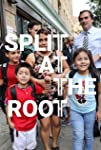Eye For Film >> Movies >> Split At The Root (2022) Film Review
Split At The Root
Reviewed by: Jennie Kermode

If there’s one thing that’s likely to linger in the minds of people around the world in decades to come, when they reflect on what happened in the US under Donald Trump’s presidency, it’s the image of children kept in cages. For Trump, the horror this created was a deliberate tactic. it was intended to deter even the most desperate asylum seekers, so the more publicity it attracted, the better. Not everybody just watched and felt helpless, however. When she learned that all some migrants needed to be reunited with their children was help to pay court bonds and access lawyers, social worker Julie Collazo realised that this was an area where she could make a difference. Together with her husband Francisco, she founded Immigrant Families Together and set about raising money which could restore those children to the people who loved them. This documentary tells the story of that organisation alongside the stories of some of the migrants it helped.
It may surprise readers outside the US – and possibly some within it – to learn that entering that country without permission is only a misdemeanour offence: the equivalent of a parking ticket. This is, after all, the country whose most famous statue boasts the words of poet Emma Lazarus: “give me your tired, your poor, your huddled masses yearning to breathe free, the wretched refuse of your teeming shore” – and as one of the migrants in this film expresses, she has a stronger ancestral claim to be there than anyone of European stock. When borders were erected on a continent where people traditionally moved around a lot, there was an understanding that they would continue to do so, and, indeed, the economies of many southern states in the US would struggle to function without a regular influx of seasonal workers from south of the border. Because of this historical legacy, people migrating from Mexico, Guatemala etc. are not automatically criminal. If they pay a bond, they have the right to stay there and apply for residence.
There’s a widespread belief that northward migration is driven simply by a desire to improve personal economic circumstances. Whilst that’s doubtless true for some, Rosy and Yeni, two of the first migrants whom immigrant Families Together was able to help, have very different stories to tell. Both fled gang violence – in one case after family members had been killed, in the other after the levying of highly credible threats. They left behind their homes, their extended families, their communities and everything they knew in an effort to keep their children safe. The removal of those children at the border thus compounded existing distress.
Something that this film does well is to explore that distress not as a single traumatic experience which is now in their past, but as the cause of ongoing suffering. The children, in particular, continue to experience panic attacks and nightmares in a country where they ought to feel much safer. One boy gives testimony to camera which will make any parent shudder. Then there were the physical effects. in detention, only the most basic medical attention was available. Not everyone survived.
By following Rosy and Yeni’s experiences after escaping detention, the film also reveals something of what life is like for immigrants left uncertain about their futures. The desperate hope for a letter or phone call confirming long term security; the fear of a sudden visit from ICE; and the awful question of what these parents who have fought so hard to keep their families together would do if their children were granted residence and they were not. It shows us what life in the US means to them, the new lives they have built for themselves despite the challenges posed by hardly knowing anyone, and how their children have flourished at school. Director Linda Goldstein Knowlton mixes interviews with observational footage which highlights the importance of the domestic and the day-to-day. This provides a point of contrast which keeps the extraordinary nature of forced family separation in perspective.
Beyond these individual stories, Split At The Root is a film about allyship and how, by seeking out the right opportunities and listening to those directly affected, ordinary people can step up to help when they see something happening which is clearly wrong. Though parts of it are hard to watch, it’s ultimately a positive experience, celebrating how more and more people have stepped up to support these families. The great thing about paying bonds, of course, is that the money is usually returned after a while, at which point it can be spent on helping someone else. The psychological impact of receiving support like this from strangers can be seen on the faces of the migrants. For them, beyond the relief of having their children back, this grassroots rejection of cruelty is the point.
Reviewed on: 08 Apr 2022

















